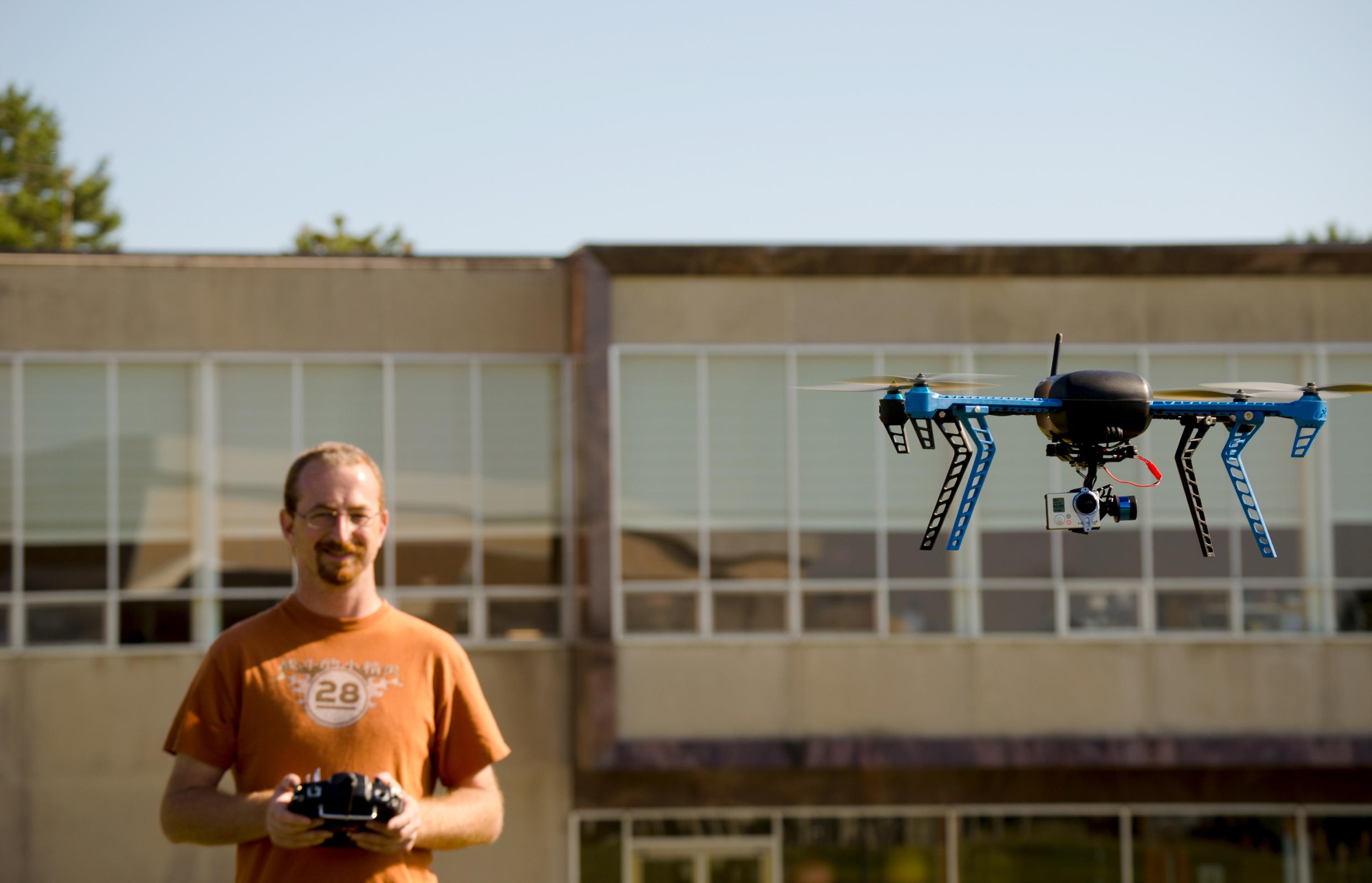Graduate student, Phillip Moore, piloting a quadcomputer on campus.
If you are wondering what has been flying overhead on campus this summer, it could be one of the human-computer interaction department’s unmanned aerial vehicles. The pilot was likely graduate student Phillip Moore, who earned his BFA in graphic design from SUNY Oswego before pursuing a master’s degree in human-computer interaction (HCI).
Moore became interested in learning more about HCI after meeting program coordinator Damian Schofield. Schofield’s passion for the field and the close relationships with students attracted Moore to the program.
Also appealing to Moore was the flexibility of the program which allowed him to explore a variety of topics in the field. “All of my life I’ve been these two people. I am interested in science fiction and technology and I’m also an artist and designer. HCI meant I could pursue of those things,” Moore said.
“All of my life I’ve been these two people. I am interested in science fiction and technology and I’m also an artist and designer. HCI meant I could pursue both of those things.”
Robot research
Following a course on transhumanism, Moore and five of his HCI peers traveled to Royal Melbourne Institute of Technology in Melbourne, Australia. The HCI and RMIT screenwriting students collaborated on producing short films with NAO robots as the actors. The robot theater research measured viewers' emotional attachment to the robots as actors.
It was in Melbourne that Moore was first introduced to drone research. While at RMIT, Moore was exposed to a prototype quadcopter, developed by a Ph.D. student, designed to act as a jogging partner. The “jogging” quadcopter was intended to gamify exercise to measure the effect the robot’s presence had on runners. Upon returning to the states, the HCI program purchased three quadcopters of its own to allow students to begin their own research on the unmanned aerial vehicles. “It was great to be able to start my own research right away. I'm thankful that SUNY Oswego and the human-computer interaction program was able to support my interests in the field” Moore said.
The combination of the jogging-partner quadcopter and robot theater sparked Moore’s interest in the way humans interact with and react to robots. These experiences served as the catalyst to Moore’s research with drones. Moore’s next project involved creating his own screenplay featuring a drone named ALFE and its owner. Moore then measured viewers' perception of the drone and their emotional connection to it.
The next step
As a personal project, Moore would like to continue to work with drones and has plans to build his own. By building his own, the drone could be used for specific purposes. Moore hopes to combine his background in art and HCI to create synchronized flying paths for the drone. By inputting code and a piece of music, the drone’s flight path would vary depending on the song. Moore is also currently working on a paper examining the legalization of commercial use of UAVs. WIth plans to move to the West Coat, Moore hopes to secure a position in usability.




